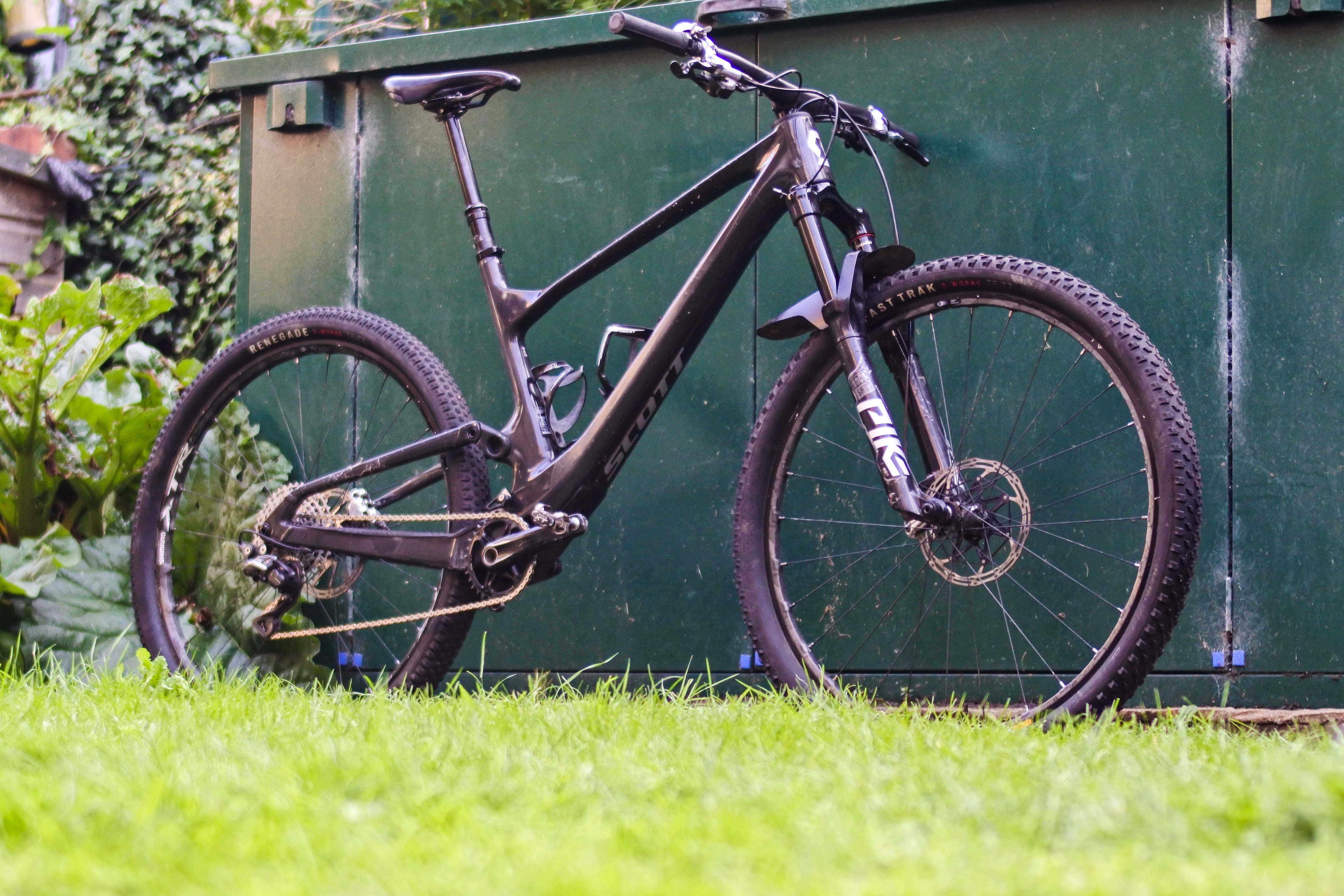For this edition, Luke Bradley shares his Scott Spark: “they’re very popular and with good reason – it’s lightning fast.”
Bike brand and model
Scott Spark
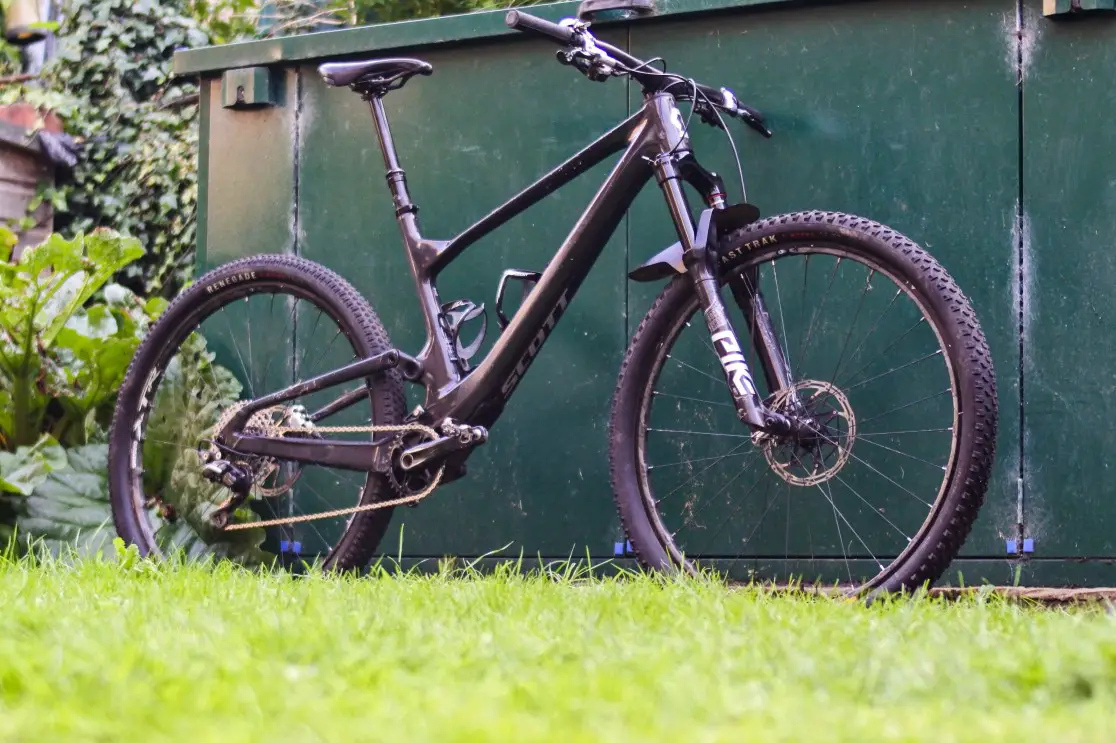
Why this bike?
While some Singletrack Forum members will know me for riding up big Scottish mountains, I race endurance XC events and I thought it would be interesting for people to see the thought that goes into building an XC bike when you’ve got free reign to pick parts. A lot of thought has gone into every part I’ve bought for this bike.
It’s difficult to look past the bike that’s won the most World Cup rounds in recent years. They’re very popular at these events and with good reason – it’s lightning fast. I just managed to ride to 3rd Male Pair at Glentress 7 and have won some silverware at the Strathpuffer, Ten Under the Ben and Ten at Kirroughtree on it. However, as a privateer, I only do four of these events a year and there are more considerations for a bike than it being good on an XC course.
I ride this bike day to day as well – being able to swap the head angle from around 67° to 65° just by rotating the headset cups means I have a very capable trail bike in only a few minutes. That combined with 130mm travel at the front and 120mm at the rear, some very carefully selected components and a spare set of wheels with beefier tyres and this bike can comfortably handle the vast majority of my riding in Southern Scotland.
In winter I ride a sponsor correct Trek hardtail but the Spark is much more versatile, and faster both up and down than a hardtail. I ride for Roots Cycles – they don’t provide me with kit other than a jersey but when the bike charity I volunteer for (Bikes for Refugees Scotland) was broken into last year Roots gave us five brand new bikes to sell to raise funds and I thought that kind of generosity deserved some promotion.
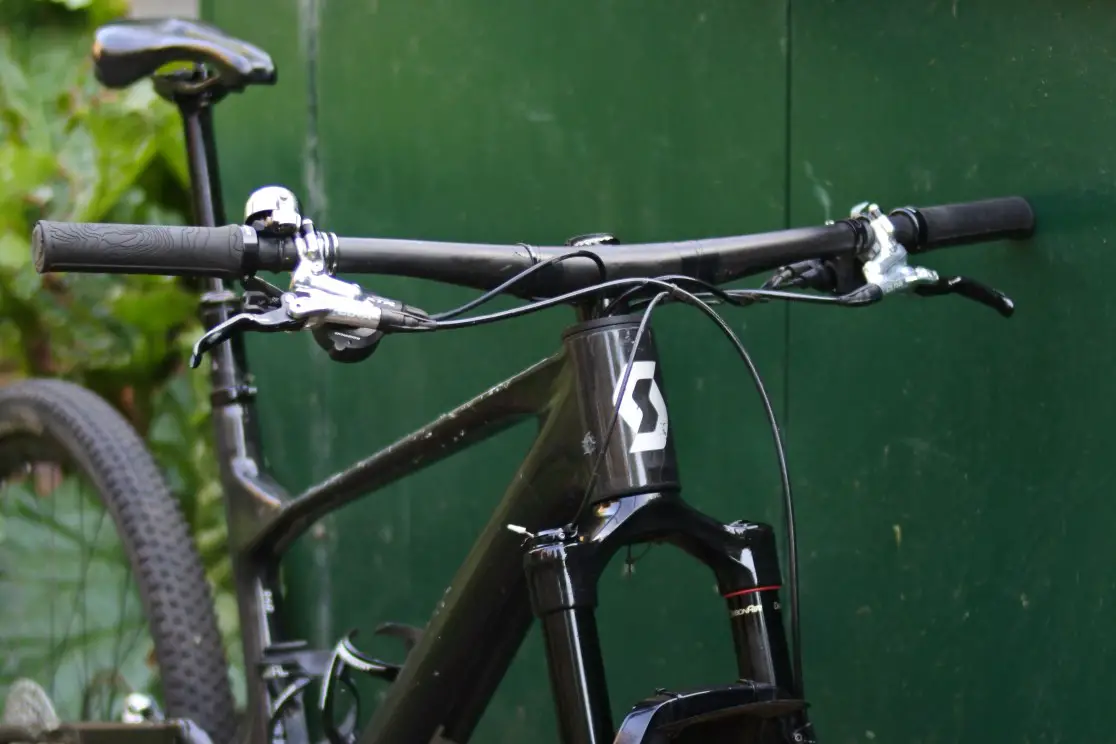
Frame
Scott Spark 940 – carbon front end and aluminium rear.
Fork
Rock Shox Pike RL3 – while I’m otherwise a weight weenie, I struggle to justify the cost of upgrading to a SID for a 150g weight saving.
Shock
Rock Shox Deluxe RL.
Suspension Set Up
Because the shock and fork have a solid lockout operated remotely from the bars, which I prefer to a setting that just ramps the compression damping up slightly, I can have the bike set up to be comfy and grippy when unlocked. I run around 27% sag.
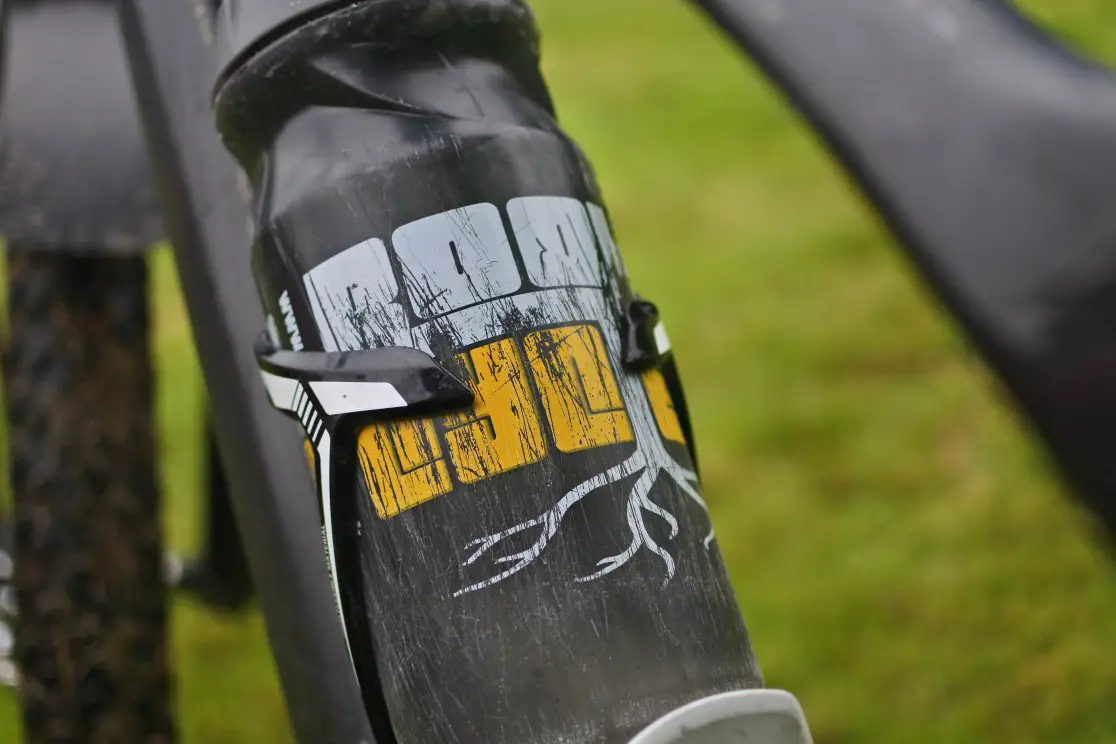
Wheels
Shimano XTR M9000 – these are probably the bit I’d most like to change. The hubs are great – I prefer servicing cones to bashing out bearings. The rims are thin aluminium with a carbon fairing for strength but they’re a bit portly at 1650g. I prefer a narrow rim width – I found that I have more pinch flats when I ran wider rims.
Tyres
Specialized Fasttrak 2.3″ and Renegade 2.3″ rear, both S-Works versions. This is a really fast combination – the rear reminds me of an old Maxxis Larsen TT which I loved. They’re not the toughest (both are stitched with dental floss) but they work well in all but the worst slop and they’re cheap compared to other tyres. I think people would be surprised how little tread you can get away with and still ride hard downhill.
Chainset
Shimano XTR MT900 “Black Crank” with 32T chainring – the bike’s got a BB92 bottom bracket shell and BBs that fit in here for 30mm axles don’t last two minutes in Scotland so Shimano cranks with 24mm axles and a serviceable Chris King bottom bracket works well for me.
Rear Mech
Shimano XTR M9000 with the clutch removed – I don’t feel the benefit of clutches outweigh the disadvantages. I leave them in, then six months later when Scotland’s winter has seized them up I whip them out.
Shifters
Shimano XTR M9000 11 speed – I find 11 speed to be very reliable, and lighter than 12 speed. I’ve not ridden a Scottish race course yet where I’d need a gear as low as 32-51.
Cassette
Spedao 11-42 One Piece – I had just worn out an XTR M9000 cassette and they’re thin on the ground now so I’m trying this all steel one-piece cassette that’s CNC machined. Shifting isn’t as sharp as Shimano but hopefully it’s reliable.
Brakes
Formula Cura 2 – I like hardly any level pull and an on/off feel and these brakes are great for that. They’re also very light and, unlike most other brands these days, have had no reliability issues on any of my bikes. I’ve not bled my other set once in four years.
Bars & Stem
Faserwerk Baslerstab One Piece – I like my bars rolled forward and this one-piece combo from Switzerland has that feel, whilst also weighing as much as a light stem and 580mm wide flat carbon bars from 20 years ago. Regardless of it being a race bike, I prefer a 50mm stem length and the bars are 770mm wide.
Grips
Race Face Half Nelson – I hate fat grips and ones that have chunky treads so these thin, smooth grips are great.
Seatpost
Syncros Duncan Dropper – droppers have really revolutionised XC racing. I don’t know how I used to high post stuff ten years ago.
Saddle
Selle Italia Novus Boost Carbon – I like a lightweight carbon railed saddle but have had some “downstairs” issues lately so like this saddle that puts no pressure on my undercarriage.
Accessories
I have a lovely Crane E-Ne bell – it’s really for when I ride to the trails on the canal towpath but people respond well to it at races! I also run two bottle cages with my Roots Cycles water bottles in, a saddlebag of tools and even though it’s not meant for it, I put a TPU tube behind the door to access the shock.
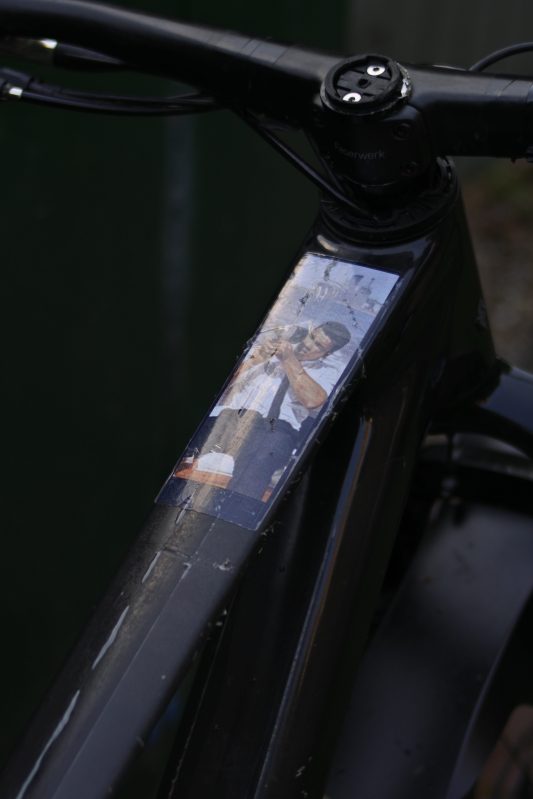
Size and Weight
Large, 11.12kg (24.5lbs)
Additional Comments
It looks fancy but I bought the frame, fork and seatpost off a Ukrainian guy who was heading home to fight and so it didn’t actually cost much to build – less than £2k. I’m surprised that it’s come out about the same weight as the bikes used at World Cups, but with only 11 gears, no batteries or electronic motors in the derailleurs, seatpost or suspension it’s easy to see where the weight saving has come from despite the hefty fork and wheels.
People probably want to know how horrible it is to live with, what with the headset cable routing and hidden shock. The answer is – it’s grand. The headset routing is actually fine – in some ways it’s faffier, but in others it’s easier – you have an enormous hole to pass the cable through rather than a tiny port so replacing cables is easy once you have the stem off. The Formula brake lever fits through a 1.5″ bearing too so when the top headset bearing finally dies (it’s 2.5 years old) I’ll just have to disconnect some cables.
The shock is very easy to remove and tweak – removing the door is the only extra step compared to a normal bike, and the bonus is the shock is fully protected from mud. The only thing that annoys me is that the bearings don’t last so long but I think people would say that about any race bike.
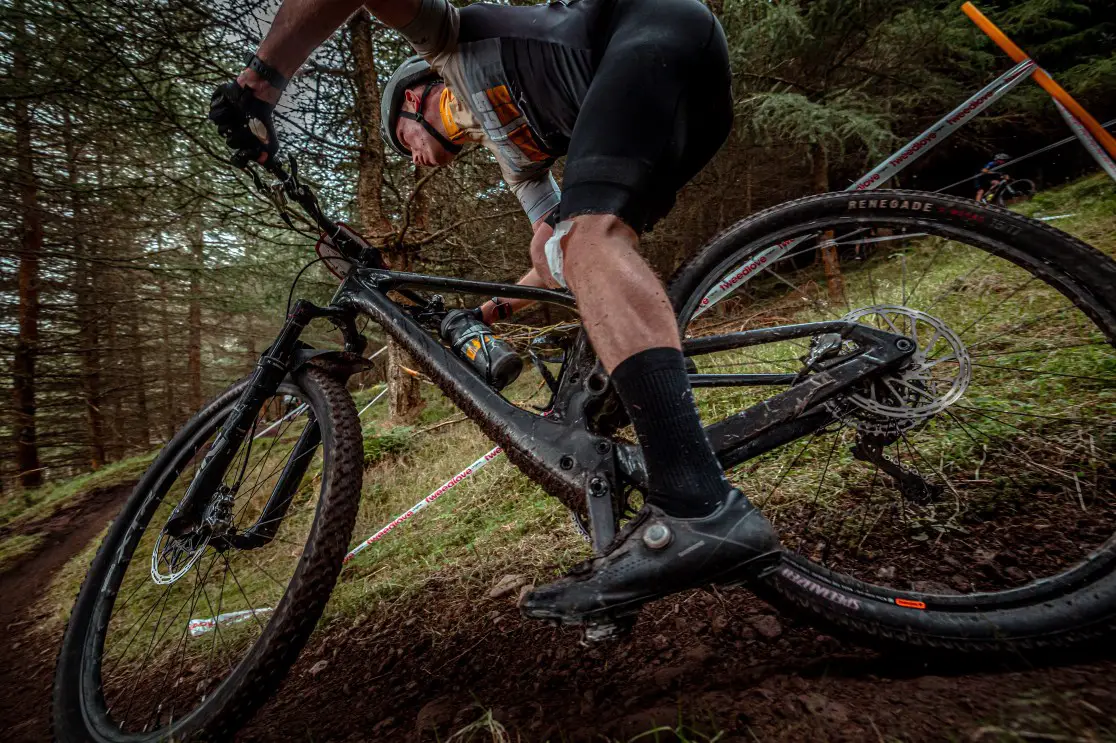
Want to share you bike with the group?
Whether you’ve got a special new bike or just a bike that’s special to you, this is where you get to tell us about it! You send us your submissions, and then we cast our judgemental expert lustful eyes over them and bring them to the world to ooh and ahh over. We’re picking the prettiest, the most curious, and the ones with a good story for you to appraise, praise, and maybe look wistfully at.
